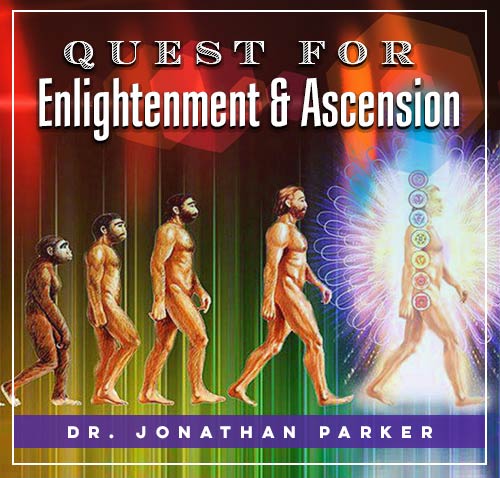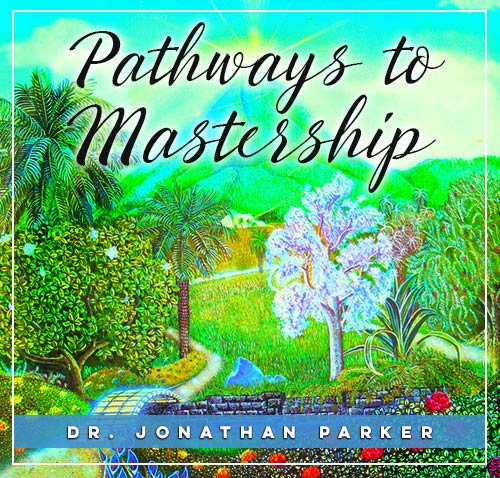Practicing Mindfulness for Clarity

Hey there, amazing readers! 🖐️ Just a quick note: yes, we know there are a lot of ads here. Trust us, we get it—it’s not the prettiest look, but they help us keep this blog alive and kicking. Those pesky little ads cover the costs of all the behind-the-scenes magic, from hosting and tech stuff to creating content we hope you’ll love.
We’re committed to delivering quality posts, and your support (even just sticking around despite the ads) means everything to us. So, bear with us, and thanks for helping us keep the good vibes rolling. Now, on to the fun stuff! 😉
TRANSLATE BUTTON AT THE END OF THE ARTICLE
A Quick Overview
In our fast-paced lives, clarity often feels like a luxury we can’t afford.
But practicing mindfulness can help us cut through the noise and find clarity in the chaos.
This article will explore what mindfulness is, its benefits, and practical tips for integrating it into our daily lives.
Let’s embark on this journey towards a clearer mind together!
What Is Mindfulness and Why Is It Important?
Mindfulness is all about being present in the moment.
It’s about focusing on what’s happening now rather than worrying about the past or fretting over the future.
Imagine taking a moment to savor your morning coffee instead of scrolling through your phone.
That’s mindfulness!
Why is it important?
Well, we live in an era filled with distractions.
Our attention is constantly pulled in multiple directions—emails, social media notifications, and the demands of work and family.
Practicing mindfulness helps ground us.
It encourages awareness and acceptance of our thoughts and feelings without judgment.
This practice fosters mental clarity, helping us make better decisions and respond to challenges more effectively.
Additionally, mindfulness can enhance emotional resilience.
When we acknowledge our feelings, we’re better equipped to handle stress and adversity.
This isn’t just a theoretical benefit; countless studies show that mindfulness can significantly improve mental health and overall well-being.
The Benefits of Mindfulness for Mental Clarity
Mindfulness offers a treasure trove of benefits, especially when it comes to mental clarity.
Here are some key advantages:
Improved Focus: With mindfulness, we can train our minds to concentrate better.
This means fewer distractions and a sharper focus on tasks.
Enhanced Creativity: When the mental clutter clears, creative ideas often flow more freely.
Mindfulness helps create space for innovative thinking.
Better Decision-Making: A clear mind can assess situations with greater clarity.
Mindfulness allows us to weigh options calmly and make informed decisions.
Reduced Anxiety: By grounding ourselves in the present, we can lessen feelings of anxiety that stem from overthinking or worrying about what’s next.
Emotional Regulation: Mindfulness teaches us to recognize our emotions without being overwhelmed by them, promoting a balanced emotional state.
Increased Productivity: When we’re focused and calm, we can accomplish tasks more efficiently and with greater satisfaction.
Greater Self-Awareness: Mindfulness encourages reflection, helping us understand our thoughts and actions better, leading to personal growth.
Improved Relationships: By being present, we listen better and connect more deeply with others, enhancing our interpersonal relationships.
Physical Health Benefits: Mindfulness can lead to lower blood pressure and improved sleep, contributing to overall well-being.
Lasting Peace of Mind: A consistent mindfulness practice fosters a sense of inner peace, allowing us to navigate life’s challenges with grace.
Easy Mindfulness Techniques for Beginners
Starting a mindfulness practice doesn’t have to be overwhelming.
Here are some simple techniques to help you get started:
Breath Awareness: Focus on your breathing.
Inhale deeply through your nose, hold for a moment, and exhale slowly.
Repeat this for a few minutes.
Body Scan: Lie down comfortably.
Close your eyes and mentally scan your body from head to toe, noticing any sensations without judgment.
Mindful Walking: Take a walk outside, paying attention to each step.
Notice how your feet feel on the ground and the sensation of the air around you.
Five Senses Exercise: Take a moment to identify something you can see, hear, touch, smell, and taste.
This can bring you back to the present.
Mindful Eating: Instead of rushing your meals, take time to savor each bite.
Notice the flavors, textures, and aromas of your food.
Journaling: Write down your thoughts and feelings.
This simple act can help clarify your mind and provide insight into your emotions.
Mindfulness Apps: Consider downloading an app like Headspace or Calm.
These can guide you through mindfulness practices tailored to your needs.
Gratitude Practice: Each day, jot down three things you’re grateful for.
This simple activity can shift your mindset.
Yoga or Tai Chi: Both practices combine movement with mindfulness, enhancing your mind-body connection.
Limiting Multi-Tasking: Focus on one task at a time.
This helps improve your concentration and mindfulness.
Creating a Mindful Space: Setting the Scene
Your environment plays a significant role in your ability to practice mindfulness.
Here’s how to create a mindful space:
Choose a Quiet Spot: Find a place in your home that is free from distractions.
A corner of your living room or a cozy chair can work wonders.
Declutter: A tidy space can help clear your mind.
Remove items that don’t belong or create visual noise.
Add Comfort: Use cushions, soft blankets, or even your favorite chair to enhance comfort.
A comfy seat can make all the difference.
Incorporate Nature: If possible, bring nature indoors with plants or flowers.
Nature has a calming effect and can enhance your mindfulness practice.
Use Soft Lighting: Bright overhead lights can be harsh.
Consider using lamps with warm light to create a soothing atmosphere.
Personalize Your Space: Add items that inspire you, such as photos, art, or meaningful objects.
This can create a connection and enhance your practice.
Minimize Noise: If you live in a noisy environment, consider using white noise machines or playing soft music to drown out distractions.
Set a Routine: Having a specific space for mindfulness practice can help create a habit.
Consistency is key to reaping the benefits.
Keep it Fresh: Occasionally refresh your space with new items or rearrangements.
This can keep your practice feeling new and exciting.
Create a No-Phone Zone: Leave your phone outside this space.
This helps reduce distractions and encourages true mindfulness.
Breathing Exercises to Enhance Mindfulness Practice
Breathing is the cornerstone of mindfulness.
Here are some effective breathing exercises:
Deep Belly Breathing: Place one hand on your chest and the other on your belly.
Inhale deeply through your nose, feeling your belly rise.
Exhale through your mouth.
Box Breathing: Inhale for a count of four, hold for four, exhale for four, and pause for four.
This rhythmic breathing calms the mind and body.
Alternate Nostril Breathing: Use your thumb to close your right nostril.
Inhale through the left, close it, and exhale through the right.
Switch sides.
This balances energy and centers the mind.
Counting Breaths: Inhale and count to four.
Hold for four, exhale for four, and pause for four.
Repeat this cycle several times to enhance focus.
Visualizing Breath: Imagine your breath as a wave rolling in and out.
This visualization can deepen your connection to your breath.
Sighing Breath: Take a deep breath in and release a sigh as you exhale.
This can help release tension and promote relaxation.
Mindful Breathing: Simply focus on your breath without trying to change it.
Notice how it feels as it flows in and out.
Body-Integrated Breathing: As you breathe in, imagine filling up each part of your body with air.
When you exhale, visualize releasing tension.
Breath Counting: Count each breath as you inhale and exhale.
When you reach ten, start over.
This can help improve concentration.
Guided Breathing Exercises: Use apps or online resources for guided breathing meditations that can lead you through effective exercises.
Incorporating Mindfulness into Daily Routines
Mindfulness can seamlessly weave into everyday activities.
Here are some ideas:
Morning Rituals: Start your day with a few minutes of mindfulness.
Whether it’s sipping coffee or stretching, savor the moment.
Mindful Commuting: Use your commute as a time for awareness.
Listen to calming music or a mindfulness podcast.
Mindfulness Breaks: Set a timer and take short breaks throughout your day.
Use these moments to breathe deeply or do a quick body scan.
Mindful Cooking: Engage all your senses while preparing meals.
Notice the colors, textures, and smells of the ingredients.
During Meetings: Take a moment to center yourself before meetings.
A few deep breaths can help clear your mind and enhance focus.
Mindful Cleaning: Turn chores into a mindfulness practice.
Focus on the activity at hand, whether it’s washing dishes or vacuuming.
Gratitude Moments: At the end of each day, reflect on what made you smile.
This promotes a positive mindset and mindfulness.
Digital Detox: Set aside time without screens.
Use this time for reflection, reading, or spending time with loved ones.
Mindful Listening: Practice active listening in conversations.
Fully engage with the speaker without planning your response.
Evening Reflection: Before bed, take a moment to unwind.
Reflect on your day and practice gratitude for what went well.
Mindfulness and Its Impact on Stress Reduction
Stress is a common companion in our lives, but mindfulness can help us manage it.
Here’s how:
Awareness of Stress Triggers: By practicing mindfulness, we can identify what triggers our stress.
This awareness empowers us to respond rather than react.
Calming the Mind: Mindfulness techniques, such as meditation and deep breathing, activate the relaxation response in the body, reducing stress levels.
Detachment from Negative Thoughts: Mindfulness teaches us to observe thoughts without judgment.
This detachment can lessen the power of negative thinking.
Promoting Relaxation: Engaging in mindfulness can lower heart rates and blood pressure, creating a state of physical relaxation.
Improved Coping Strategies: Mindfulness enables us to face challenges with a calm and collected approach, improving our problem-solving abilities.
Enhanced Resilience: Regular mindfulness practice can increase our emotional resilience, making us better equipped to deal with stress.
Mindful Self-Compassion: Practicing self-kindness during stressful times can alleviate feelings of overwhelm, fostering a more compassionate inner dialogue.
Creating a Balanced Perspective: Mindfulness helps us view situations more objectively, reducing the tendency to catastrophize problems.
Encouraging Healthy Responses: Instead of reacting with frustration, mindfulness allows us to choose healthier responses, like taking a walk or meditating.
Community Support: Engaging in mindfulness with others, whether through group classes or online communities, can provide support and reduce feelings of isolation.
Practicing Gratitude: A Mindful Approach
Gratitude and mindfulness go hand in hand.
Here’s how to practice gratitude mindfully:
Daily Gratitude Journals: Spend a few minutes each day writing down what you’re grateful for.
This simple act can shift your mindset positively.
Gratitude Meditation: Sit quietly and focus on the people or things you appreciate in your life.
Allow feelings of gratitude to wash over you.
Acts of Kindness: Engage in small acts of kindness for others.
This not only spreads goodwill but also deepens your sense of gratitude.
Visual Reminders: Place reminders of gratitude around your space.
Post-it notes with positive affirmations can uplift your spirits.
Sharing Gratitude: Take time to express appreciation to those around you.
Sharing gratitude can strengthen relationships and foster connection.
Gratitude Walks: As you walk, think of things you’re thankful for.
This practice combines movement with mindfulness and gratitude.
Mindful Reflection: At the end of the day, reflect on moments of joy and appreciation.
This can deepen your sense of fulfillment.
Gratitude Breathing: With each inhale, think of something you’re grateful for.
With each exhale, release any tension or negativity.
Focus on the Present: When you notice something you appreciate in the moment, pause to acknowledge it fully.
This practice enhances mindfulness.
Cultivating a Grateful Mindset: Over time, practicing gratitude can reshape your mindset, leading to a more positive outlook on life.
Mindfulness Meditation: A Step-by-Step Guide
Meditation can be a powerful tool for mindfulness.
Here’s a simple guide to get started:
Find a Quiet Space: Choose a comfortable spot where you won’t be disturbed.
Sit or lie down in a relaxed position.
Set a Timer: Decide how long you want to meditate.
If you’re a beginner, start with five to ten minutes and gradually increase the duration.
Close Your Eyes: Gently close your eyes to limit distractions.
Take a moment to settle into your space.
Focus on Your Breath: Begin to notice your breathing.
Observe the sensation of air entering and leaving your body.
Acknowledge Thoughts: As thoughts arise, acknowledge them without judgment.
Gently guide your focus back to your breath.
Use a Mantra: If it helps, choose a word or phrase to repeat silently.
This can anchor your attention and deepen your practice.
Body Awareness: After a few minutes, shift your focus to your body.
Notice any areas of tension and consciously relax them.
End with Gratitude: Before concluding, take a moment to express gratitude for the time you dedicated to your practice.
Gradually Return: Slowly open your eyes and take a few deep breaths before getting up.
Take your time re-entering your day.
Practice Regularly: Aim to meditate regularly, whether it’s daily or a few times a week.
Consistency strengthens your mindfulness muscle.
Staying Present: Tips to Overcome Distractions
Distractions can derail even the most dedicated mindfulness practice.
Here are some strategies to stay present:
Limit Technology: Set boundaries on your phone and computer use.
Use features like "Do Not Disturb" to minimize notifications.
Use Reminders: Sticky notes or phone alerts can remind you to take mindful breaks throughout the day.
Practice Mindful Listening: When engaged in conversation, focus entirely on the other person.
This helps reduce distractions and enhances connection.
Engage Your Senses: When you feel your mind wandering, bring your attention back to your senses.
Notice what you see, hear, smell, and touch.
Grounding Techniques: Use grounding exercises, such as feeling your feet on the ground or the texture of an object in your hand, to bring yourself back to the present.
Take Mindful Breaks: Set aside a few moments throughout the day to pause, breathe, and recenter your thoughts.
Recognize Patterns: Be aware of what typically distracts you and create strategies to manage those triggers.
Stay Curious: Approach each moment with curiosity.
This mindset can divert attention away from distractions and draw you into the present.
Practice Patience: Distractions are part of the process.
Be patient with yourself and gently redirect your focus.
Join a Group: Engaging in mindfulness with others can provide additional motivation and accountability, making it easier to stay present.
How Mindfulness Improves Focus and Decision-Making
Mindfulness isn’t just about relaxation; it can significantly enhance our focus and decision-making skills.
Here’s how:
Clearer Thought Processes: Mindfulness helps declutter our minds, allowing for clearer and more logical thinking.
Increased Awareness: Practicing mindfulness fosters greater self-awareness, enabling us to recognize our biases and assumptions.
Calm Under Pressure: Mindfulness equips us with tools to remain calm during high-stress situations, promoting effective decision-making.
Improved Impulse Control: By practicing mindfulness, we can become more aware of impulsive reactions, allowing for thoughtful responses instead.
Shorter Decision Cycles: With enhanced focus comes a quicker ability to process information and make decisions.
Deeper Insight: Mindfulness encourages a reflective mindset, allowing us to consider all angles before making a choice.
Greater Objectivity: A clear mind can view situations without emotional clouding, leading to more rational decisions.
Enhanced Problem-Solving Skills: Mindfulness cultivates creative thinking, enabling us to find innovative solutions to challenges.
Lowered Emotional Reactivity: When we practice mindfulness, we can navigate emotional triggers more skillfully, improving our ability to make thoughtful decisions.
Long-Term Benefits: Over time, the skills honed through mindfulness lead to improved focus and decision-making, positively impacting both personal and professional life.
Maintaining a Consistent Mindfulness Practice: Tips and Tricks
Consistency is essential for reaping the full benefits of mindfulness.
Here are some helpful tips:
Set a Schedule: Choose specific times for your mindfulness practice, whether it’s in the morning or before bed.
This creates a routine.
Start Small: If you’re new to mindfulness, begin with just a few minutes a day.
Gradually increase the duration as you feel more comfortable.
Be Flexible: Life can get busy, so be adaptable.
If you miss a session, don’t beat yourself up.
Just get back to it the next day.
Track Your Progress: Keep a journal or use apps to track your mindfulness journey.
This can motivate you to continue.
Find a Buddy: Partner with a friend to practice together.
This mutual support can enhance accountability and make mindfulness more enjoyable.
Explore Different Techniques: Keep your practice fresh by trying new mindfulness techniques, such as different forms of meditation or yoga.
Celebrate Progress: Acknowledge your achievements, no matter how small.
Celebrating progress can encourage ongoing commitment.
Make it Enjoyable: Choose practices that resonate with you.
The more you enjoy it, the easier it is to stick with it.
Have Patience: Building a consistent practice takes time.
Be patient with yourself as you navigate this journey.
Reflect on Benefits: Regularly remind yourself of the positive changes mindfulness brings to your life.
This will motivate you to maintain your practice.
Conclusion
Mindfulness is a powerful tool for achieving clarity in our busy lives.
By practicing mindfulness, we can enhance focus, reduce stress, and improve decision-making.
The journey towards mindfulness is personal, filled with small steps that lead to significant benefits.
So, grab your cup of coffee, take a deep breath, and embrace the present moment.
You’ve got this!

The Enlightenment Journey is a remarkable collection of writings authored by a distinguished group of experts in the fields of spirituality, new age, and esoteric knowledge.
This anthology features a diverse assembly of well-experienced authors who bring their profound insights and credible perspectives to the forefront.
Each contributor possesses a wealth of knowledge and wisdom, making them authorities in their respective domains.
Together, they offer readers a transformative journey into the realms of spiritual growth, self-discovery, and esoteric enlightenment.
The Enlightenment Journey is a testament to the collective expertise of these luminaries, providing readers with a rich tapestry of ideas and information to illuminate their spiritual path.
Our Diverse Expertise 🌟
While our primary focus is on spirituality and esotericism, we are equally passionate about exploring a wide range of other topics and niches 🌍📚. Our experienced team is dedicated to delivering high-quality, informative content across various subjects ✨.
To ensure we provide the most accurate and valuable insights, we collaborate with trusted experts in their respective domains 🧑🏫👩🏫. This allows us to offer well-rounded perspectives and knowledge to our readers.
Our blog originally focused on spirituality and metaphysics, but we’ve since expanded to cover a wide range of niches. Don’t worry—we continue to publish a lot of articles on spirituality! Frequently visit our blog to explore our diverse content and stay tuned for more insightful reads.







